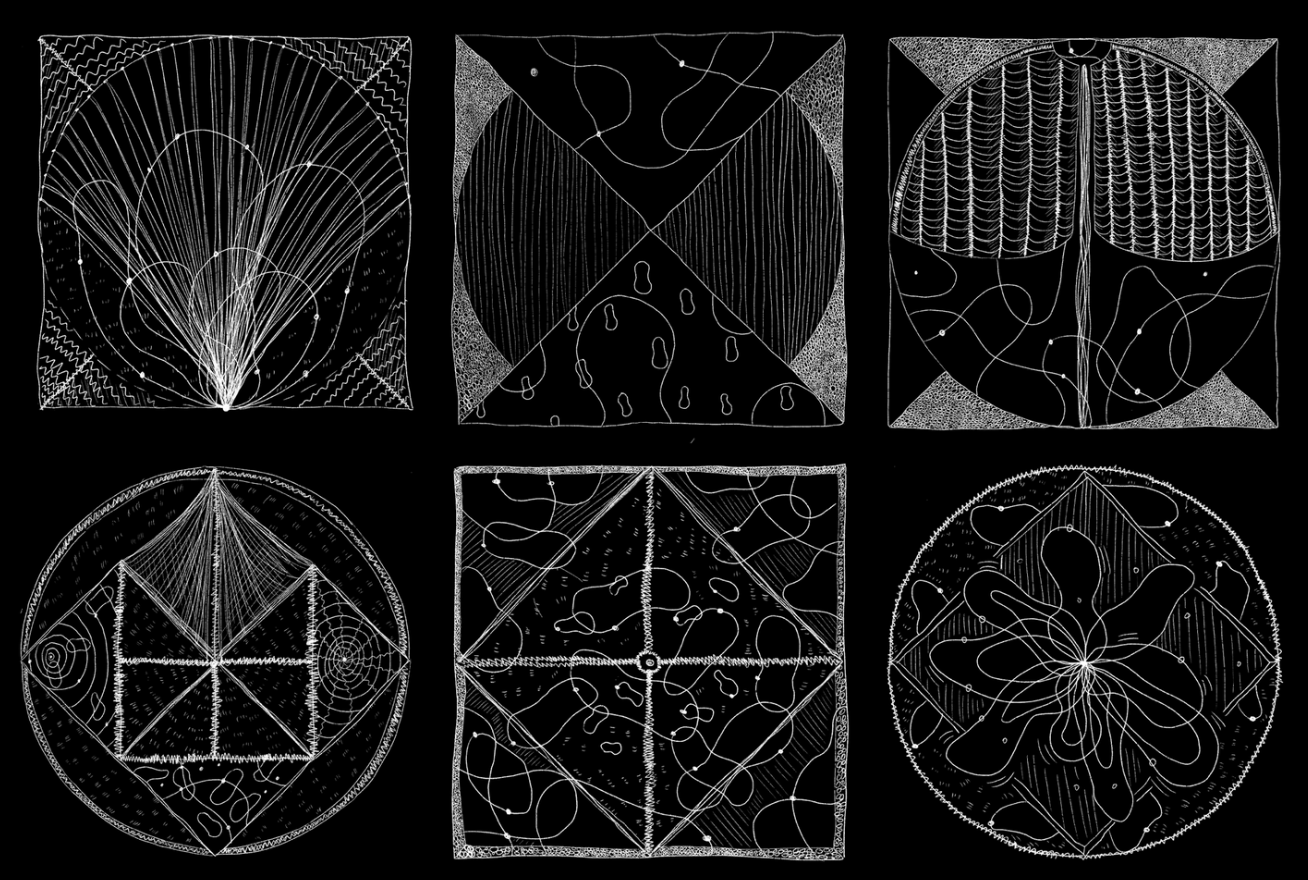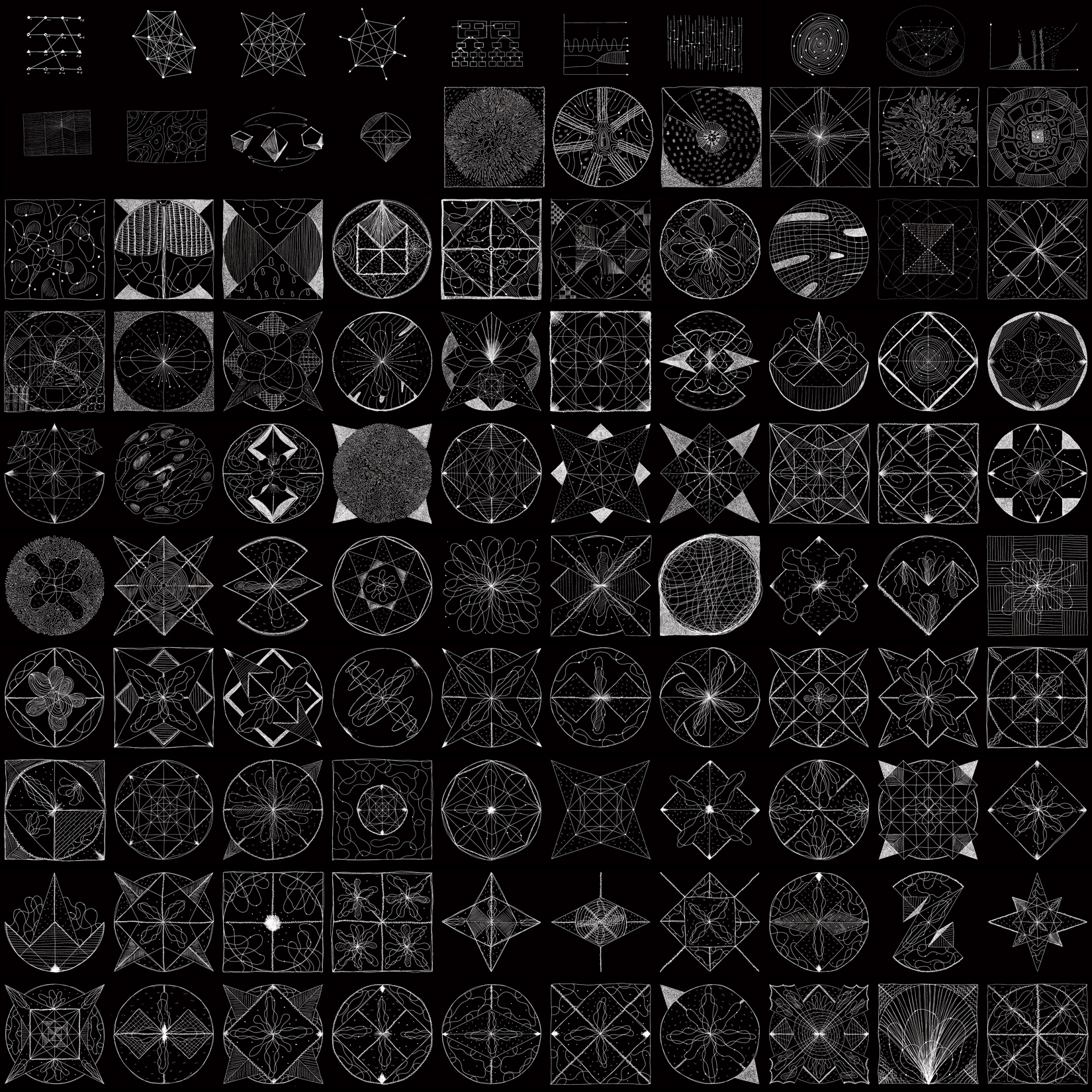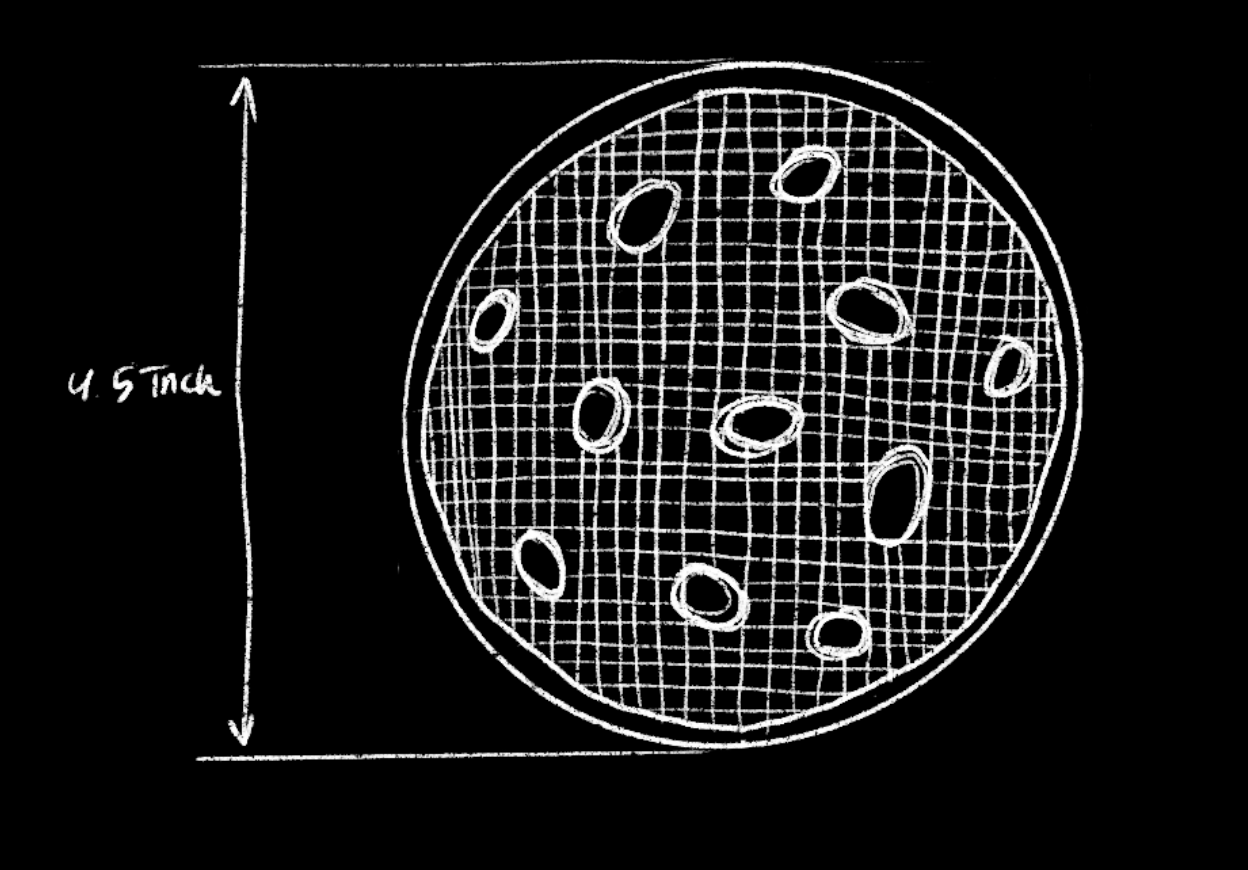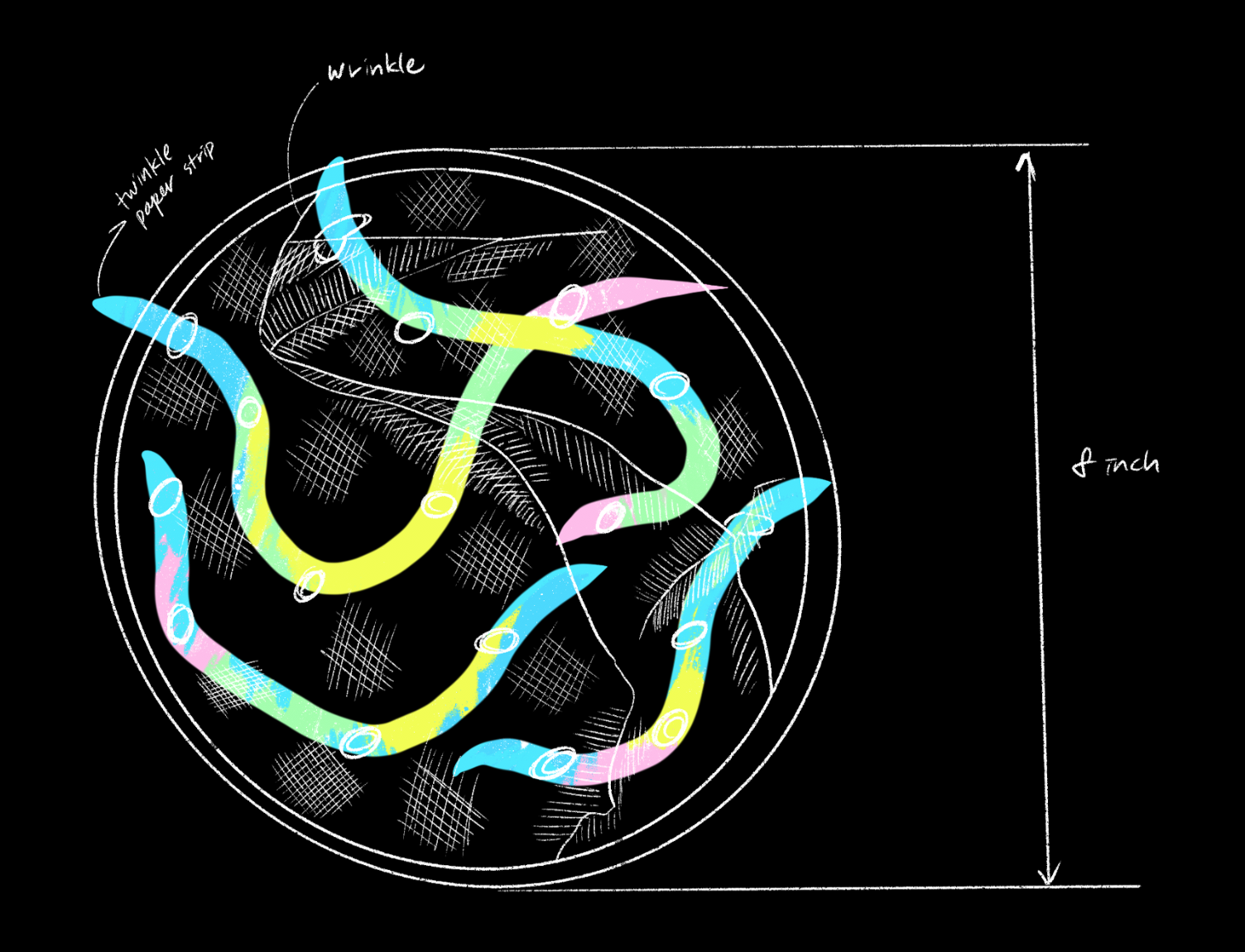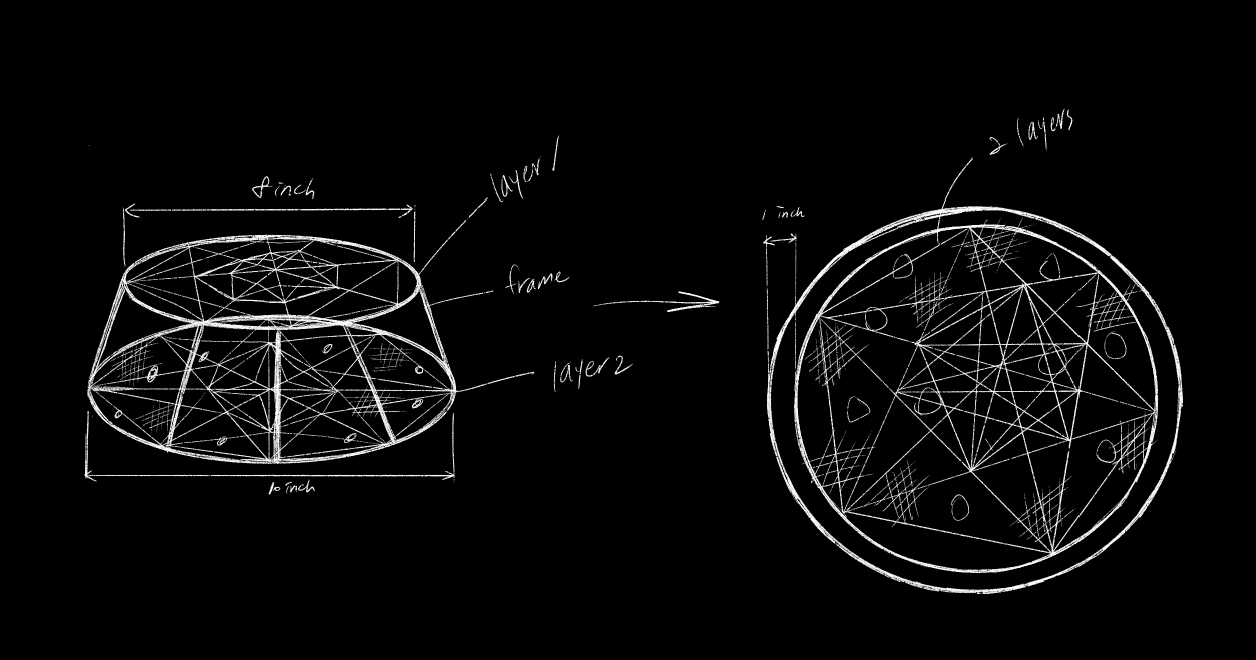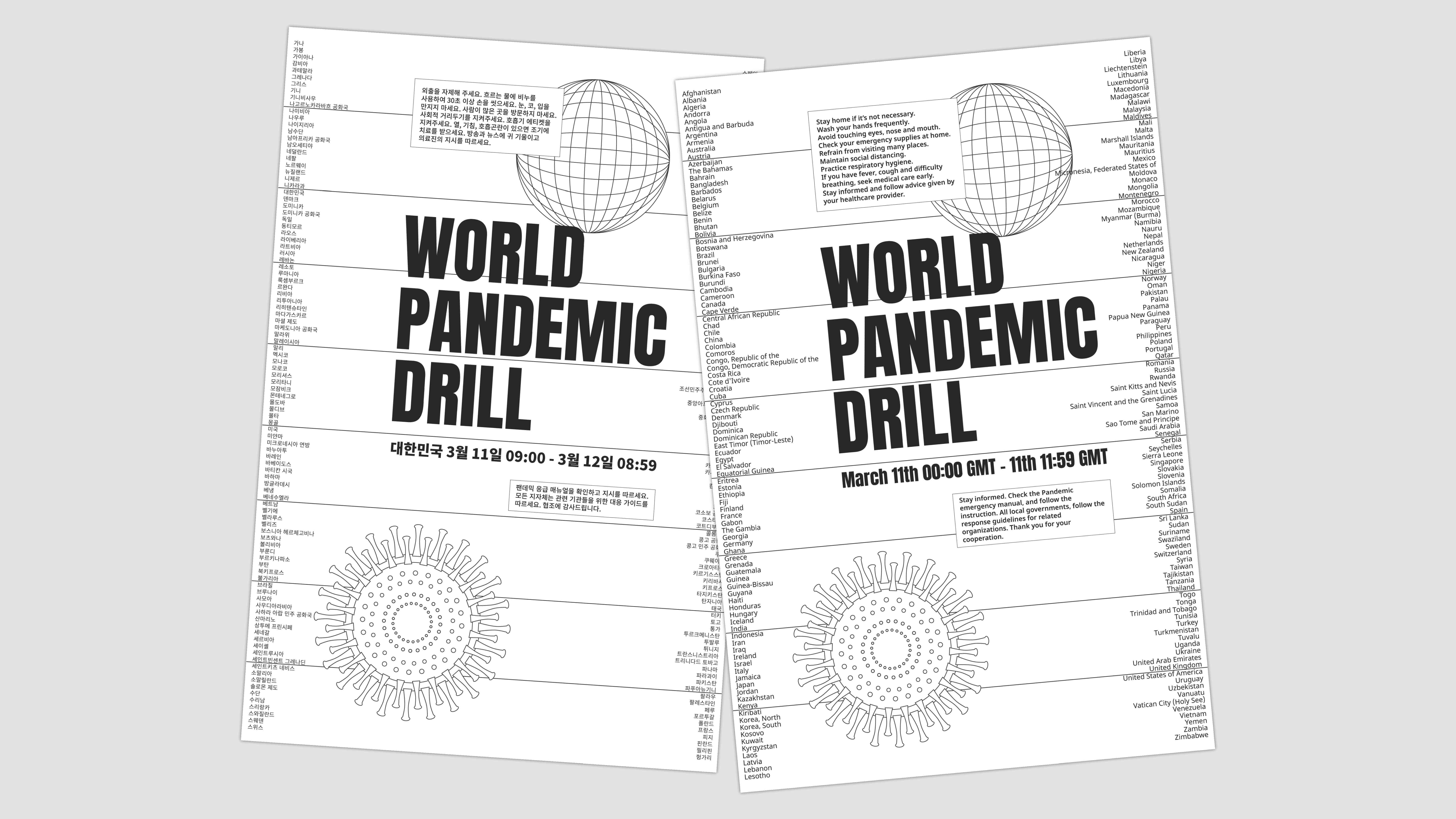Visual Lab shows what I’ve worked on for the inspiration for the concept. Through the Design (RtD) methodology, the design methodology and the design practice process have deepened the concept in a fluent visual language.
I. Blockchain sketch project
This project is a series of drawings reflecting on my thoughts generated about the research of blockchain technology. For 100 days, I made a drawing that reflects my ideas, which contain: the history of blockchain, the potential usage of blockchain, the principle of blockchain, behavior, and socio-psychology. The drawings represent words, sentences, or the context of the reading, or thoughts generated while researching.
![]()
![]()
![]()
4. Digitalization
![]()
![]()
III. Synthesis, 2019.
This project is reflected in three communication artifacts: a written book, a visual artwork, and a TED talk. These three communication artifacts are all about decentralization. After analyzing them I built paper models that reflect my ideas.
In the first communication artifact, a book called Decentralization and Local Governance in Developing Countries: A Comparative Perspective, edited by Dilip Mookherjee and Pranab Bardhan, presents case studies on the political and economic circumstances within which decentralization takes place, and how this shapes its design and possible impact. Each individual has authority, and when those individuals get together, they can impact society so that they can ultimately lead to social welfare.
The visual artwork, in the form of a papercraft, is constructed with all individual folded sheets connected with strings to represent all the individuals who are connected in society and compose a social community. The second communication artifact was a painting called Emancipation of Value, by David Johnson. Once authority became decentralized, all monetary values that are human-granted would become irrelevant. I tried to make the object, another papercraft, with multiple layers with stitch that represent the measurements of human granted values, and I put holes on each layer to express the unguarded point of the value.
![]()
![]()
The third communication, an oral piece, I choose a TED talk, ‘the four pillars of a decentralized society’ by Johann Gevers. Johann Gevers’s presentation suggests a speculative society where we don’t have to purchase products anymore once we entirely decentralize all the data that we need. There are still many limitations to make it feasible, but his logic is stable, and I enjoyed how he thinks to shake and change the entire body of social structures. So through building a paper model, I’d like to express the dynamic transformation of social structure through repetition that represents a particular system.
Through the simulation, each government could monitor medical supplies and would discuss the potential solutions to anticipated problems. These potential solutions could then be tested in further simulations. In addition, the guidelines for how citizens of each country should respond and cooperate in a given situation would be relatively clear, and aim to minimize the damage by enabling preemptive and aggressive responses in the early stages.
All these simulations and data through simulations would be stacked to be used for the next run, and all the results would be shared world wide through blockchain, to record it forever without modification.

